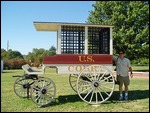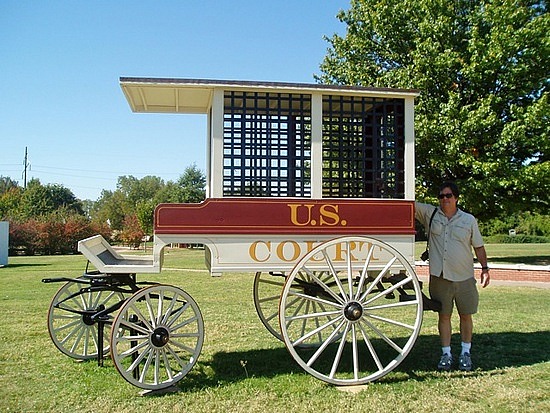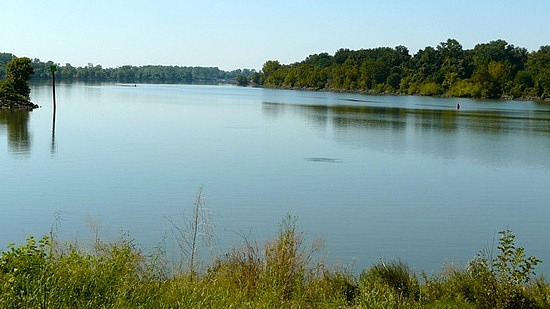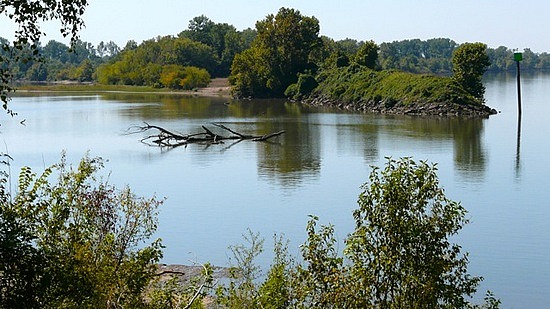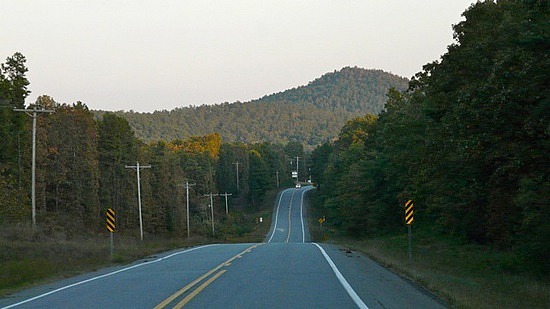This morning we visited Fort Smith, Arkansas, which has a very interesting history. The original fort was established in 1817 to help maintain peace between the Osage Indians, whose territory covered Arkansas, and the Cherokee, who the government was forcing into Arkansas from their ancestral lands in the southeast. Also in the mix were non-Indian settlers who were moving into the area in violation of a treaty that granted none would settle on Indian lands. The fort was abandoned in 1824 when a new fort was built 80 miles up the Arkansas River. But the government's forced removal of Indians from their ancestral lands in the east and southeast, pushing them west of the Mississippi, brought increasing numbers of Cherokees, Chickasaws, Croctaws, Muskogees (Creeks), and Seminoles to the region. This forced removal is known as "The Trail of Tears" for the Indians who lost their ancestral lands, their homes, and for many, their lives.
The arrival in Arkansas territory of the new tribes created conflict not only between the tribes but also with the non-Indians who continued to try to settle in the area. The non-Indian settlers prevailed upon Congress for protection and after a few years of mismanagement of funds, a new fort was built near the ruins of the first one. For some time it was used as a supply depot for migrating Indians, who were given minimal supplies and equipment with which to start their new lives.
The fort was used by the military during the Civil War. By 1871 the Indian frontier had moved so far beyond the Arkansas border that it no longer made sense to continue the fort as a supply depot. (As a side note, the Indian treaties of 1866 took away almost one-half of all lands owned by the Indian tribes prior to the Civil War.) In 1872 the Federal Court for the Western District of Arkansas moved into the fort. The building that housed the courtroom and jail still stands and is open to visitors.
The court had jurisdiction over the Indian territory and western Arkansas. The Indian territory had its own judicial system but no jurisdiction over non-Indians. It became a magnet for many desperate criminals seeking sanctuary from arrest and extradition. Many of these criminals preyed on the Indians and settlers, robbing, raping, and murdering. The government appointed US deputy marshals, who were paid upon delivery of the accused, to bring the criminals to the federal court in Fort Smith. Presiding over the court was Judge Isaac Parker, who became known as "the hanging judge". He upheld the law and thus sent many murderers to the fort's gallows. Eventually new courts were established throughout the Indian territory and the court at Fort Smith closed. There is a reproduction of the courtroom and some of the actual jail cells survive. It was an ugly and violent part of history.
The fort sits on beautifully manicured lands, trees filled with chirping birds, and a path going to the Arkansas River. Along the river are plaques dedicated to the Indians who came through here on the Trail of Tears. (Footnote: thanks to the National Park Service for an excellent brochure, from which I've drawn).
Fort Smith has a pretty downtown area; it looks like a nice place to live. From Fort Smith, we traveled on scenic byways. The parts of Arkansas we saw are very pretty; green, lots of trees, several waterways. We saw the beginnings of fall color and later this month it should be spectacular. We turned from AR-22 onto AR-309, which goes over Mt. Magazine, Arkansas' highest point at 2753 feet - it's a pretty flat state! We stopped at the interesting visitor center, which caters to many of the wildlife in the area with a viewing room, bird feeders, butterfly gardens, etc. From there, we continued on scenic roads until we got to Little Rock, our stop for the night.
